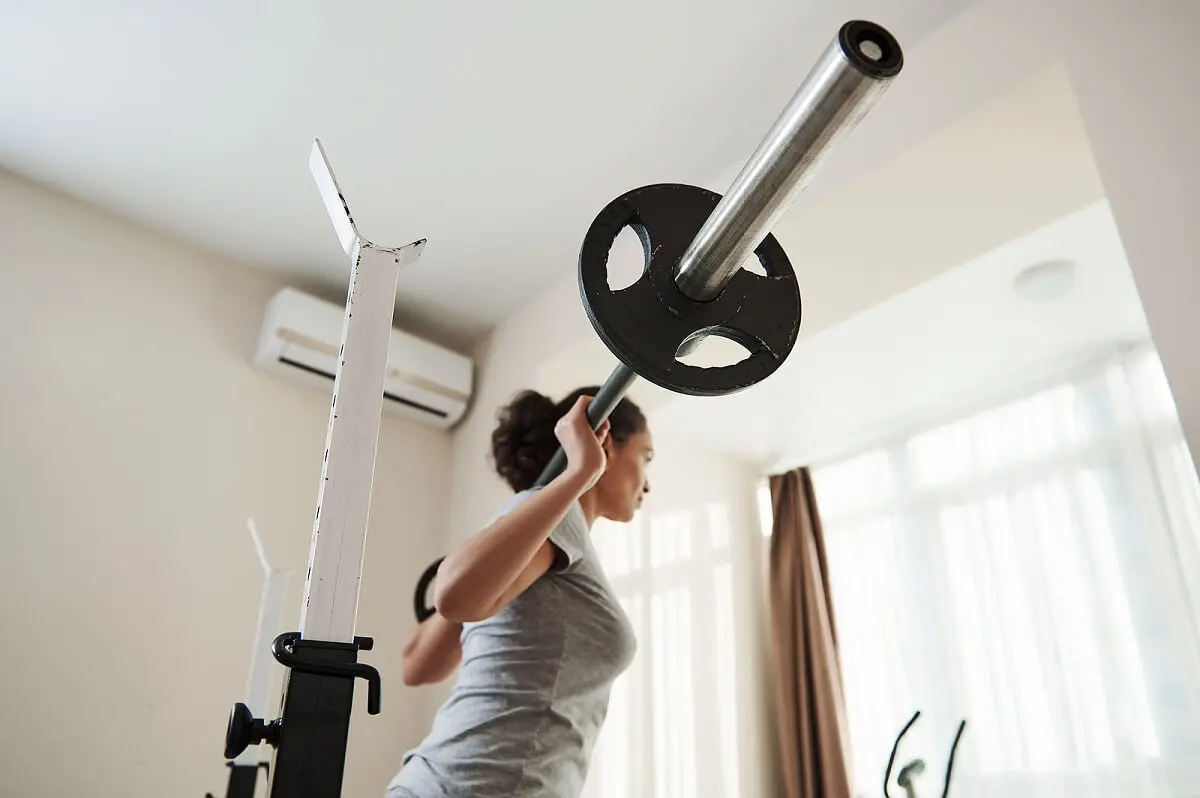7 Tips for Starting a Barbell Training Program


Reviewed and approved by the nurse Leidy Mora Molina
The thought of using a barbell after observing the efforts of some people who lift heavy weights in the gym may inhibit us at first. However, there are many exercises to try out and all of them can be adjusted to your condition. It’s just a matter of encouraging yourself and improving little by little. The results will surprise you. Read on and learn 7 tips to start your barbell training program.
Barbell training is an ideal alternative to strength programs. A proper plan and conscientious compliance will help us to increase power and improve our physical appearance. However, you must be careful and well-advised.
Basic barbell training exercises
Before starting a training program, it’s good for you to know some of the main exercises that can be performed with the barbell. Although the range of possibilities is much wider, we have selected some of the best-known ones, to show that you can strengthen all muscle groups with this element.
The different grips and loads used can provide greater intensity at the time of the activity, although it should start with no added weight or very little. These are some of the exercises that you could practice early on:
- Deadlift: This is to strengthen the buttocks, lower body, trunk and back. The bar should be very close to the body and the hips should be brought backwards to drop the weight with the arms stretched. Then, bring the hips forward to lift the load.
- Bench press: To work your chest, triceps, shoulders and back. Lying on the bench, you need to raise the bar until the arms are well stretched and lower it to chest level.
- Military press: Used to strengthen the shoulders. The bar must be placed at chest height. First, take it upwards until the arms are stretched out. Then make a reverse movement until the bar is at the height of the head. The movement is repeated until the series is complete.
- Squats: Work the quadriceps, gluteus maximus, hamstrings, and adductors. With the bar over the shoulders, bend your legs and bring the hips backwards to lower the torso. Then return to the starting position and repeat the movement. We must be careful with the load to avoid damage to the joints.
- Lunges: With the bar behind your neck, bring one leg forward and the other down, almost until your knee touches the ground, so that a 90 degree angle is formed between the two. The movement is then repeated in reverse.
- Hip thrust: With your back on a bench and your feet flat on the floor, push your hips up. You can add difficulty with a loaded barbell. According to a study entitled Barbell hip thrust, muscular activation and performance, the mechanics of the barbell exercise favor greater activation of the hip extensor muscles compared to more conventional exercises. The sequence of muscle excitation is gluteus maximus, erector spinae, hamstrings, and quadriceps femoris.
- Good morning: The hamstrings, quads, back, glutes and abdominals are activated with this exercise. With the barbell on your back, you try to bring your hips back and your torso forward until it’s parallel to the floor. The knees can be slightly bent and the back should remain straight. Once the position is achieved, hold for a few seconds.

Take note of these 7 tips for your barbell training
Barbell training allows us to increase strength and endurance, as well as helping us to achieve better posture, which will provide us with stability and balance. Patience will be a fundamental ally to get all the benefits of training.
Remember that it isn’t magic, but effort and perseverance. We offer you these tips to start your training in the best way.
1. Do a good warm-up
Preparing the muscles before starting strength training is key. With this, we achieve better mobility in the joints and greater flexibility.
Taking 5 or 10 minutes to perform this type of exercise will allow us a better control of the body and quality of movement to carry out the barbell training. Warming up and stretching will also reduce the risk of injury.
2. Prioritize technique
The proper performance of any exercise is paramount, even over the number of repetitions or weight used. Using the right technique for each activity will allow us to obtain all its benefits and minimize the risk of injury.
We must be patient to see the results, because if we try to achieve results in a short time, we run the risk of damaging the joints. Sprains, strains or fractures are common injuries due to not taking the necessary precautions.
If you have doubts about any movement you can consult with the professional in charge at the gym.
3. Don’t use too much weight
In any activity, it’s recommended to start without any weight or with little load. First we must adopt good postures and master the movements.
At the beginning, the exercises shouldn’t be overly difficult. As we add weights, we must make sure that we can control the movements. If this isn’t achieved, you should lower the weight.
4. Perform just a few repetitions
Doing many repetitions could overload the musculature. Therefore, it’s best to start with just a few and then increase progressively, as you begin to master each of the activities.
Don’t be discouraged to see others lifting more weight than you. They probably started out the same way you did.
5. Don’t underestimate rest
Overtraining could be counterproductive. Sometimes, the desire for quick results leads us to exercise daily with demanding routines.
However, we’re more likely to end up injured. Working each muscle group 2 or 3 times a week is sufficient.
If you like to train every day, you can focus on specific groups and vary the next day. After the day, the muscles need to recover, so rest is essential.
6. Pay attention to pain
Don’t forget that exercises should never cause pain, but rather tension in the muscle. If you feel discomfort, it’s advisable to abandon the activity and consult a professional.
Many times we feel that the pain isn’t too intense and we choose to continue with the activity. But we run the risk of aggravating the situation and suffering an injury.

7. Train with a professional
The help of a professional in the gym is key to performing the movements well and to using the right weight, based on our physical condition. A certified trainer will know how to evaluate what we need.
You may be interested in: Bodyweight Training: What Is It and What Are Its Benefits?
Everyday activities as a mirror of barbell training
Barbell exercises are a good alternative for strength training programs. We must prioritize technique and increase the loads progressively as we improve fitness.
You must be consistent and the results will begin to show in the medium term. The ideal thing is to include variety to carry out a complete routine and work all muscle groups. That’s why we recommend you consult an expert.
Start training and you’ll see that the benefits won’t only be reflected in the mirror, but also in how we carry out daily activities and in a greater sense of well-being.
All cited sources were thoroughly reviewed by our team to ensure their quality, reliability, currency, and validity. The bibliography of this article was considered reliable and of academic or scientific accuracy.
- Neto WK, Vieira TL, Gama EF. Barbell Hip Thrust, Muscular Activation and Performance: A Systematic Review. J Sports Sci Med. 2019 Jun 1;18(2):198-206. PMID: 31191088; PMCID: PMC6544005. Disponible en: https://pubmed.ncbi.nlm.nih.gov/31191088/
-
Westcott WL. Resistance training is medicine: effects of strength training on health. Curr Sports Med Rep. 2012 Jul-Aug;11(4):209-16. doi: 10.1249/JSR.0b013e31825dabb8. PMID: 22777332. Disponible en: https://pubmed.ncbi.nlm.nih.gov/22777332/
This text is provided for informational purposes only and does not replace consultation with a professional. If in doubt, consult your specialist.








